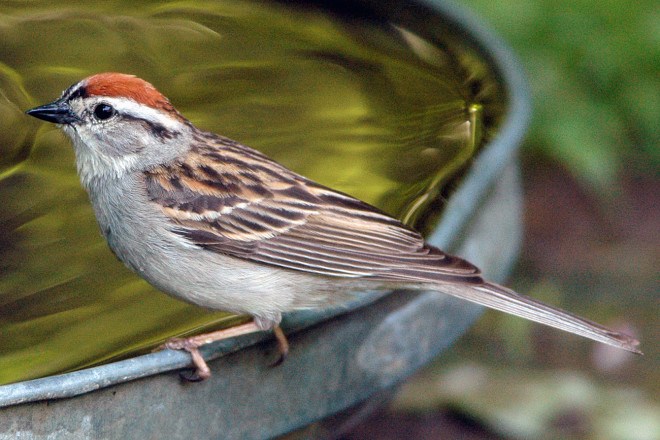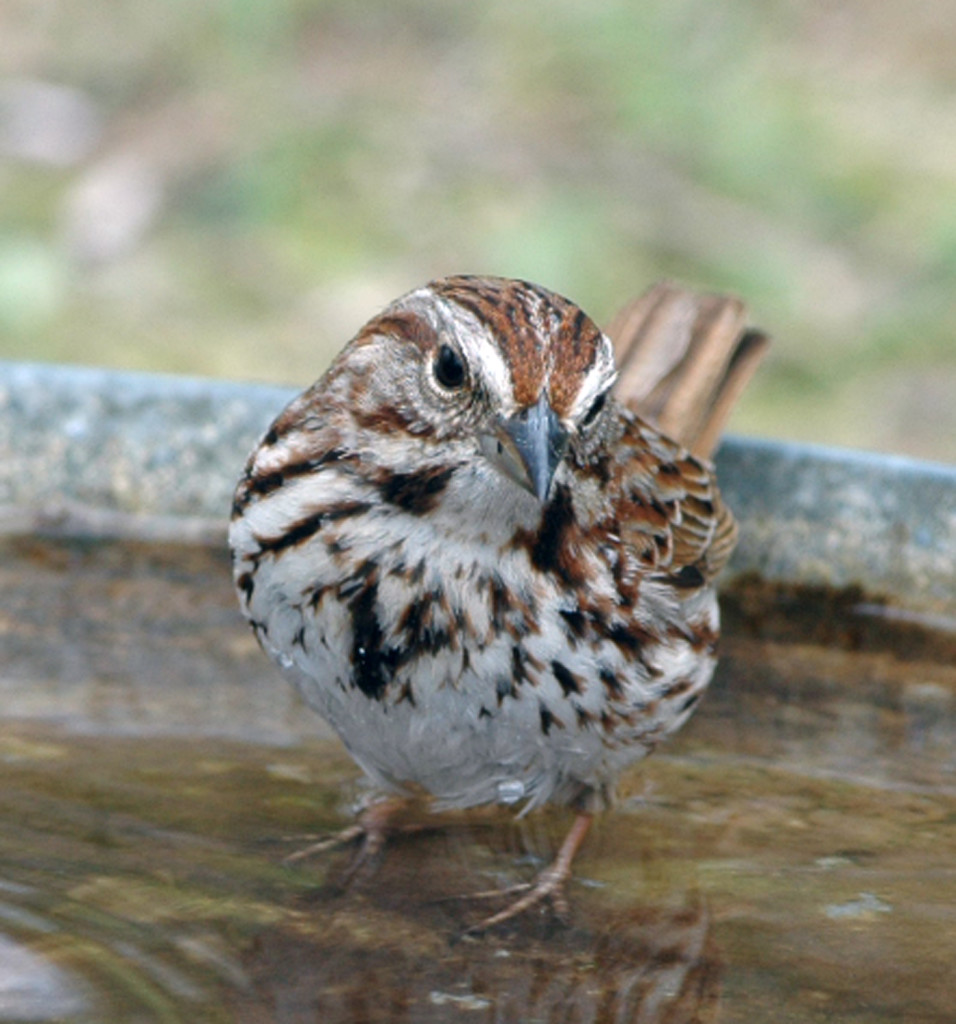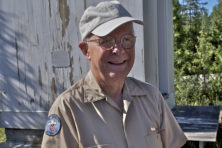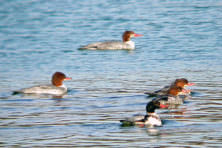Roy Lukes: April is Sparrow Month
- Share
- Tweet
- Pin
- Share

In case you may have forgotten last spring was colder than normal and many of the returning nesting bird species arrived later than they did this year.
The first American woodcock was heard last month on March 9. In 2015 it was first reported on March 31. One of our favorites, the eastern bluebird, was seen on March 11 this year but not until March 25 last year. And a favorite local field nesting species, the eastern meadowlark, was first reported on March 8 this year but not until March 26 last year.
Most people don’t become very excited about sparrows. Perhaps the first thing that comes to their mind is the alien house sparrow, a bird most birdwatchers don’t even include with the sparrows. We consider them to be weaver finches, grouped in field guides next to the blackbirds and goldfinches, but not with the native sparrows.
I look to April as the sparrow month. The first to arrive in most years is the song sparrow. Records that Charlotte kept for 2002 through 2014 show their arrival date can range from March 11 to as late as April 1. White-throated sparrows came as early as March 19 but in some years a few may have stayed all winter. Fox sparrows do not nest here but start moving through as early as March 20 to as late as April 7. Most are heading further north by the end of April. They nest in the far northern coniferous forests of Canada, the western U.S. and way up into Alaska.
Lincoln’s and white-crowned sparrows also migrate through Door County and will nest further north. The earliest date for their arrival is April 19 and some are still seen in our area at the end of May. Lincoln’s sparrows nest in many of the far northern counties in Wisconsin, choosing sphagnum bogs and tamarack swamps or moist alder thickets. White-crowned sparrows nest in the far northern and western parts of Canada and Alaska.

The song sparrow is heavily streaked with brown, black and white and is one of the earliest to arrive in spring. Photo by Roy Lukes.
One should be able to see nine species of native sparrows during a good, late spring morning in northeastern Door County. They are the field, song, chipping, savannah, vesper, grasshopper, swamp, white-throated and clay-colored. A tenth species that might possibly be heard and seen is the Henslow’s.
Should a vesper sparrow suddenly fly away from you along the side of an open country road you will easily see its whitish outer tail feathers, similar to our winter visitors, the dark-eyed juncos. Don’t confuse it with the larger, heavier meadowlark that also has white in its outer tail feathers.
White-throated sparrows must be sought in the low, young evergreen woods and swamps of northeastern Wisconsin having boreal or northern characteristics. Their high, lilting, far-reaching melodic song leaves many people in awe of its great beauty.
April is also the resurrection month when sap rises in the trees, the protective bud scales drop off the leaf and flower buds of many trees and shrubs, seeds burst forth, grasses sprout and the mourning cloak and Milbert’s tortoise-shell butterflies are sure to make their first appearances, having wintered over as adults. Eventually balmy southerly breezes will warm the chilled and damp ground that carries with it the fragrance of spring. Wild leek leaves begin to turn the deciduous woodlands a vibrant green.
A year ago, on April 2, we had a high temperature of 62 degrees and that was the arrival date for the belted kingfisher, northern flicker, eastern phoebe, golden-crowned kinglet and fox sparrow. Three days later we saw the first field sparrow and winter wren, and on April 11 the hermit thrush and chipping sparrow made their appearance. A good field mark to watch for is the hermit thrush’s rusty tail which the bird cocks slightly upward, then slowly and deliberately lowers, as though in slow motion. A few American tree sparrows might still be here so be sure to look closely at the beak of what you may think is a newly arrived chipping sparrow. The chippie has a bill that is totally black and will have a horizontal black line on the side of its face going right through the eye. Tree sparrows have a rusty stripe going back from the eye and will have a yellow lower beak, called the mandible.
Thomas Gray wrote in his “Ode On the Spring”: “The insect-youth are on the wing, Eager to taste the honeyed spring.” It is frequently on the flowers (catkins) of the earliest pussy willows that we experience the wild bees gathering their first vital life-sustaining food of the year.
How we long for the frog chorus of April, when swamps and shallow pools will soon become the nurseries for the “frog jelly” and eggs which will be magically transformed into myriad tiny tadpoles. Leading the rollicking musical outpouring will be the spring peepers, wood frogs and western chorus frogs to be followed later by the common toads, leopard frogs and gray tree frogs.
There is something perfectly satisfying and relaxing about parking oneself on a quiet country road just after sunrise to listen to the birds of the open fields. This symphony of music ranging from the field sparrows and horned larks to the easy tune of the eastern meadowlarks and perhaps a song sparrow should remind us that, free for the asking, nature’s music can soothe, heal and comfort. Try it once the weather has warmed and the native birds have returned. You’re in for a pleasant surprise. And a season concert ticket will cost you only your time.



